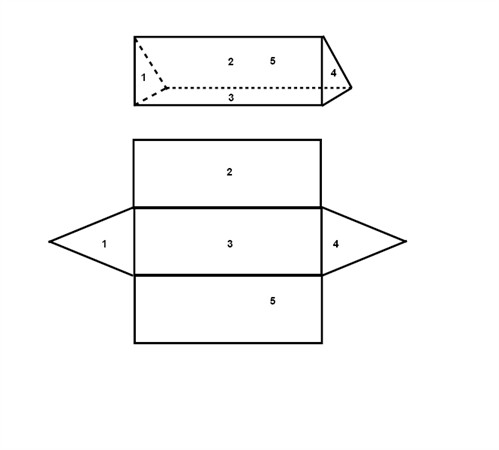Have you heard of the term prism? Prisms are three-dimensional solid objects with two identical ends. It has flat sides, comparable bases, and equal cross-sections. A rectangular prism is defined as a polyhedron that has 2 congruent and parallel bases. A cuboid is another word for a rectangular prism. A rectangular prism has six faces, each of which is a rectangle with twelve edges. Because of the cross-section along its length, it is called a prism. Geometry is the study of shapes and the arrangement of objects.
A rectangular prism has a surface area and volume, just like any other three-dimensional object. The prism’s net area equals its surface area. In this article, we will go over the definition, types, surface area, and volume of a rectangular prism in detail.
What is a Triangular Prism?
A well-known polyhedron is a triangular prism. It has three rectangular sides as well as two triangular bases. Because of the prism’s structure, the two triangular bases are parallel and congruent. It is a polyhedron with nine different nets. The bases’ edges and vertices are linked together. The rectangular sides of this prism are rectangular in shape and are joined side by side. Triangle cross-sections are perpendicular to the base faces.
Consider a box on the ground. In arithmetic, a prism is a common daily box. A prism, as defined in the preceding article, is a three-dimensional solid form with two similar ends connected by parallel lines of equal length. Most boxes have rectangles or squares at the tops and bottoms. Assume your box now has triangles instead of rectangles for its top and bottom. This unusual box is known as a triangular prism, or a prism with a triangle on either side.
Do you find the topic of prisms and prism types interesting? If so, you can visit the Cuemath website to learn about the topic in a fun way.
Definition of Triangular Prism
A three-dimensional polyhedron with three rectangular and two triangular faces is known as a triangular prism. The two triangular faces, as well as the three lateral faces in the shape of rectangles, are congruent. Thereby, a triangular prism has five faces, nine edges, and six vertices.
What is a Rectangular Prism?
A prism with rectangular bases is known as a rectangular prism (the top and bottom faces). It has six faces in total, with three pairs of identical opposing faces, implying that all opposite faces in a rectangular prism are identical. It has three dimensions: length, width, and height. Rectangular prisms can be found in everyday objects such as rectangular tissue boxes, school notebooks, computers, fish tanks, large structures such as freight containers, rooms, storage sheds, and so on.
Rectangular Prism Properties
- Six faces, twelve edges, and eight vertices make up a rectangular prism.
- The top and bottom of a rectangular prism are always rectangles.
- It has three dimensions, just like the cuboid: length, breadth, and height.
- Pairs of opposing faces that are either the same or congruent.
- A right rectangular prism’s lateral sides are rectangles.
- Parallelograms are the lateral faces of an oblique rectangular prism.
- It has a rectangular cross-section.
- It has the shape of a cuboid.
Examples of Rectangular Prism
Rectangular tissue boxes, juice boxes, laptop computers, school notebooks and binders, traditional birthday presents (such as shirt boxes), cereal boxes, and aquariums are some examples of everyday life. Rectangular prisms can also be found in larger structures like shipping containers, storage sheds, homes, and skyscrapers.
